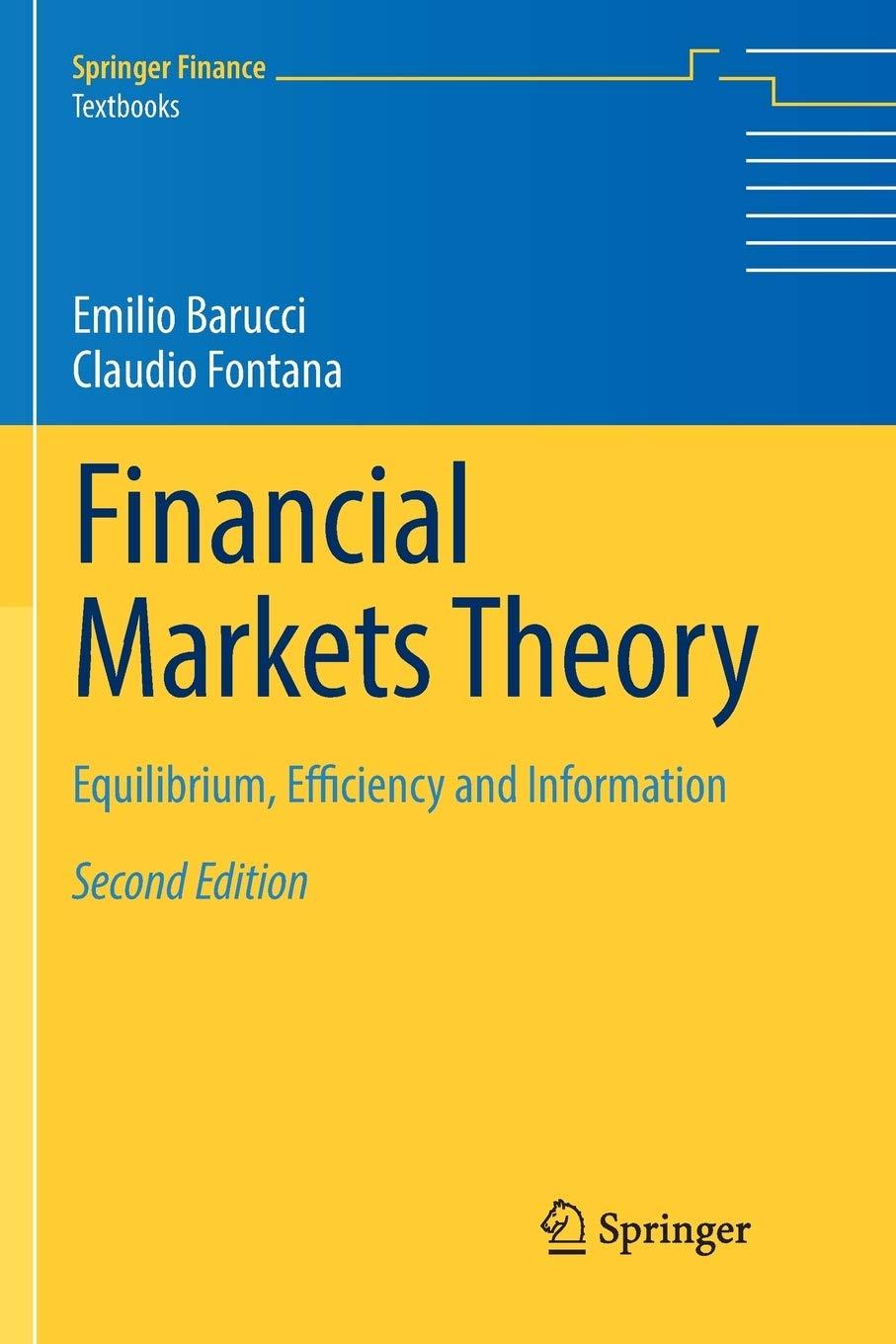Consider a quadratic utility function (u(x)=x-frac{b}{2} x^{2}), an initial wealth (w_{0}=100), a risk free rate (r_{f}=1.1) and
Question:
Consider a quadratic utility function \(u(x)=x-\frac{b}{2} x^{2}\), an initial wealth \(w_{0}=100\), a risk free rate \(r_{f}=1.1\) and a risky asset with expected return \(\mathbb{E}[\tilde{r}]=1.3\) and variance \(\sigma^{2}(\tilde{r})=1.5\).
(i) Determine the optimal portfolio \(w^{*}\) for \(b=0.006\).
(ii) Determine for which values of \(b\) we have \(w^{*}<0\).
(iii) How does \(w^{*}\) change if the risk free rate increases to \(r_{f}^{\prime}=1.2\) ?
(iv) How does \(w^{*}\) change if the initial wealth increases to \(w_{0}^{\prime}=150\) ?
(v) How does \(w^{*}\) change if its expected return decreases to \(\mathbb{E}\left[\tilde{r}^{\prime}\right]=1.2\) ?
Step by Step Answer:

Financial Markets Theory Equilibrium Efficiency And Information
ISBN: 9781447174042
2nd Edition
Authors: Emilio Barucci, Claudio Fontana





